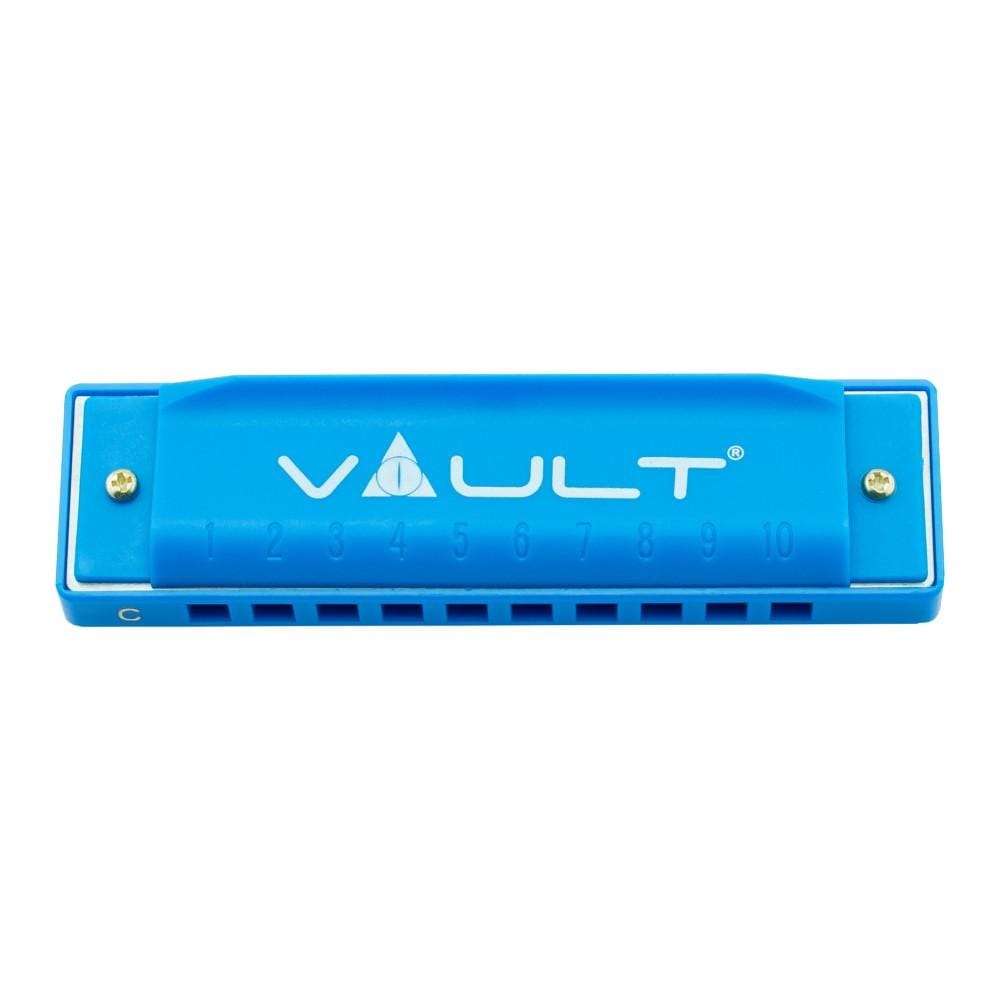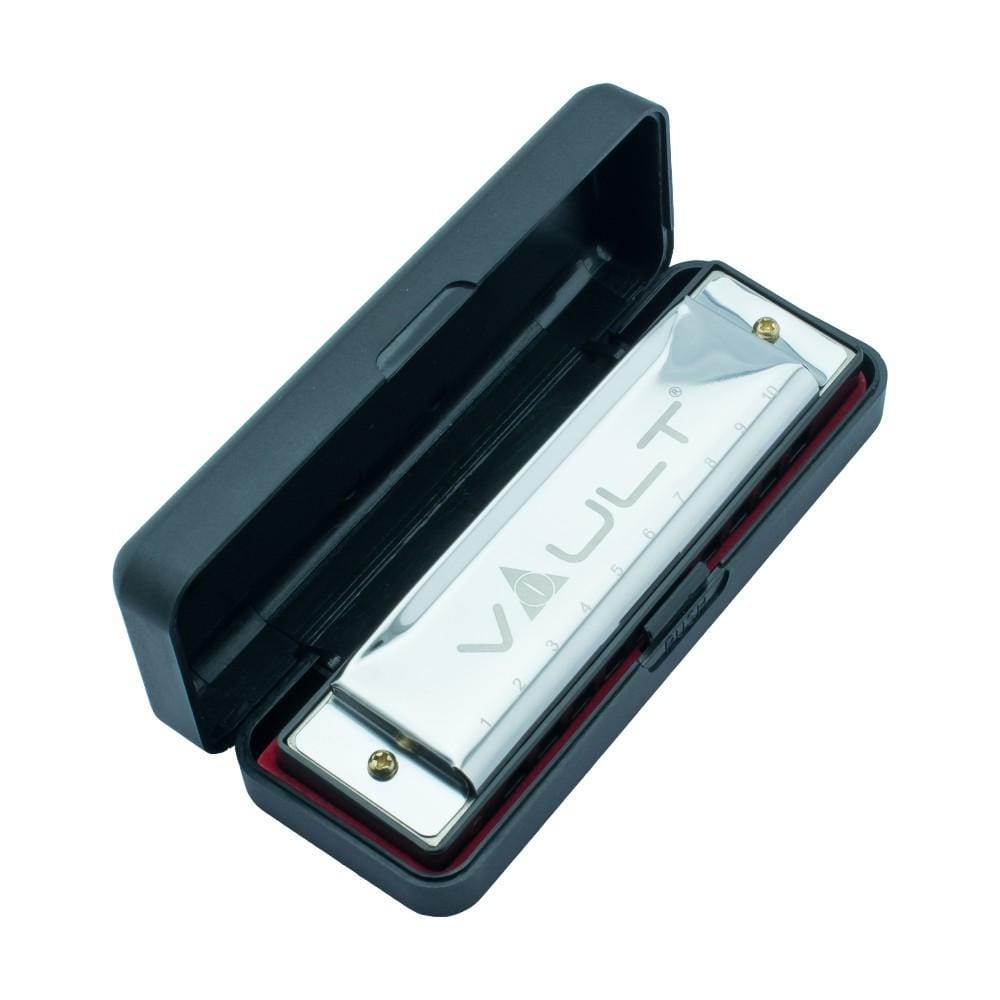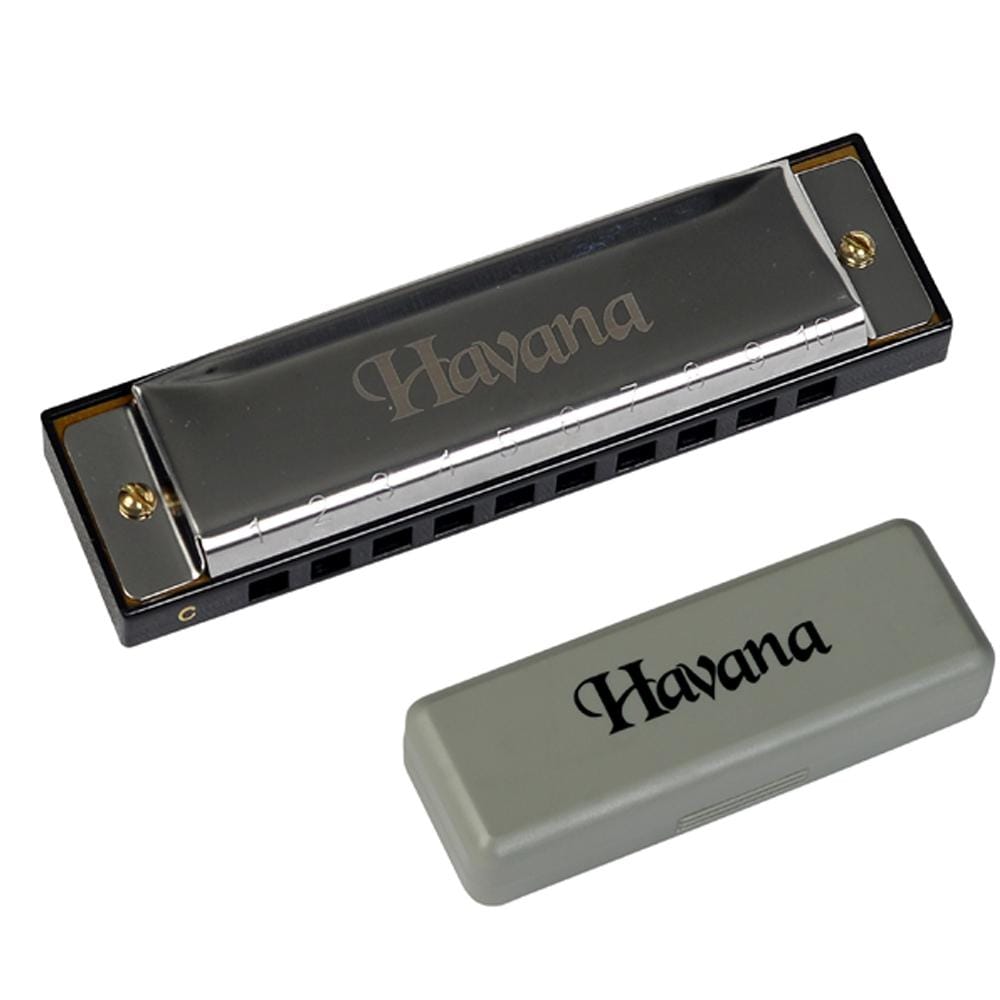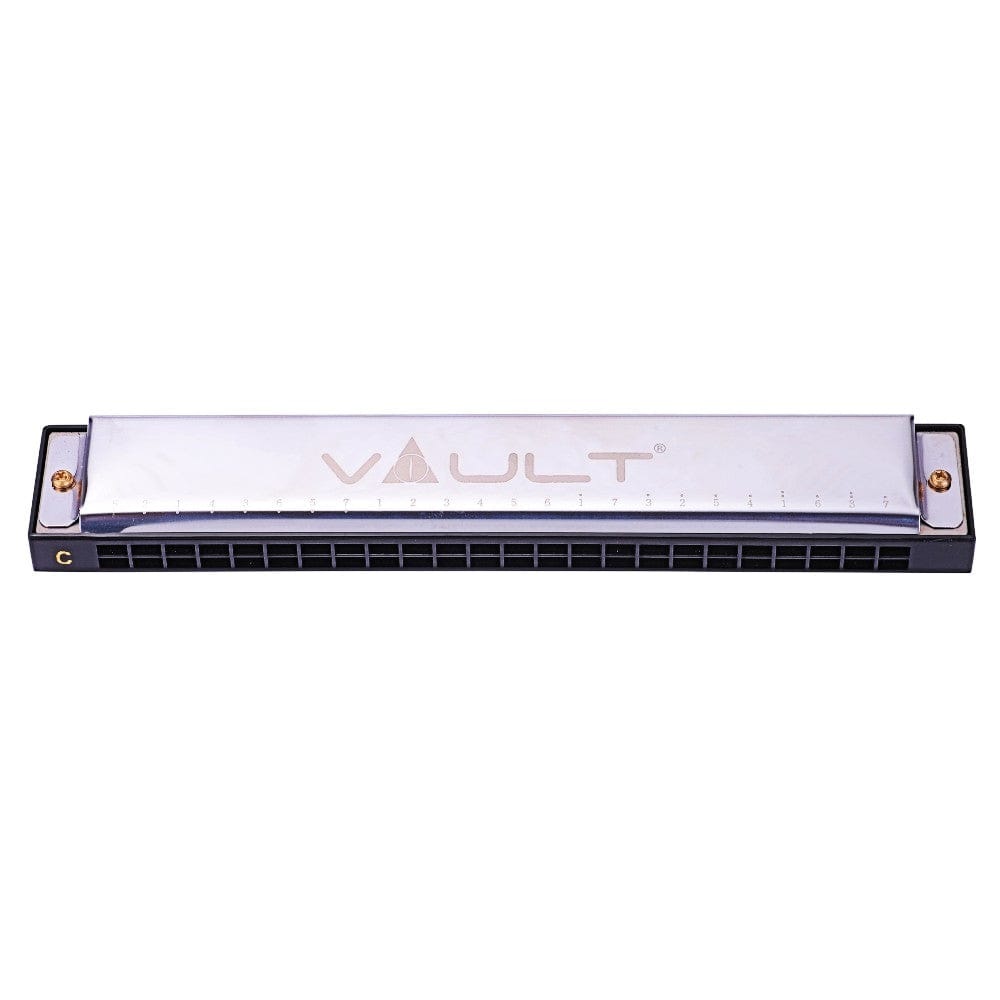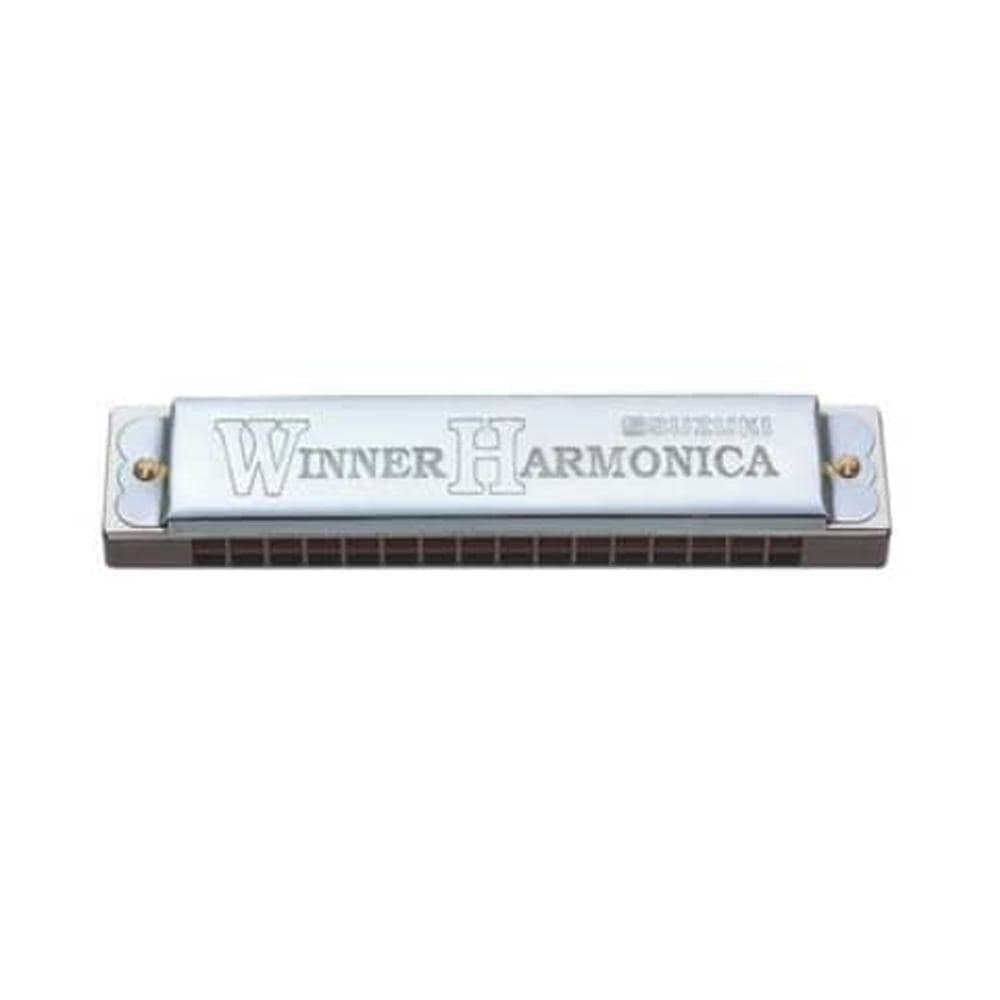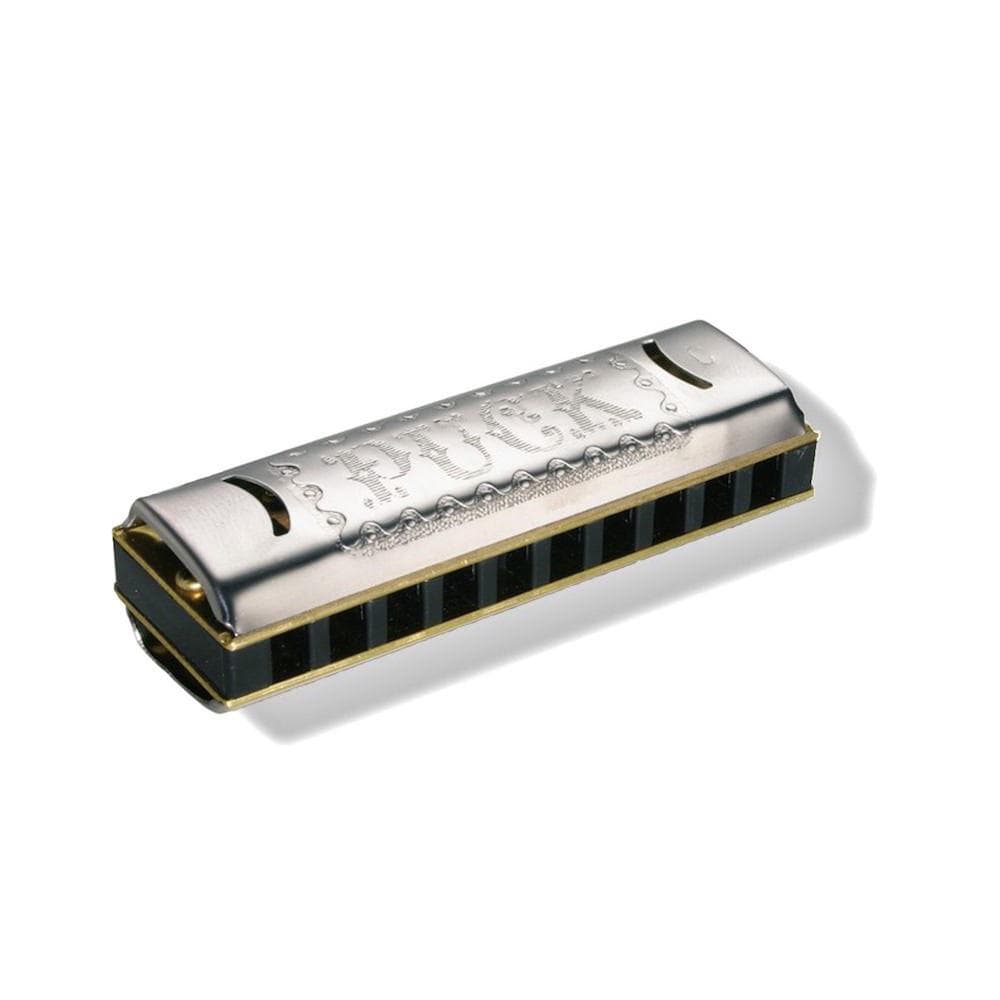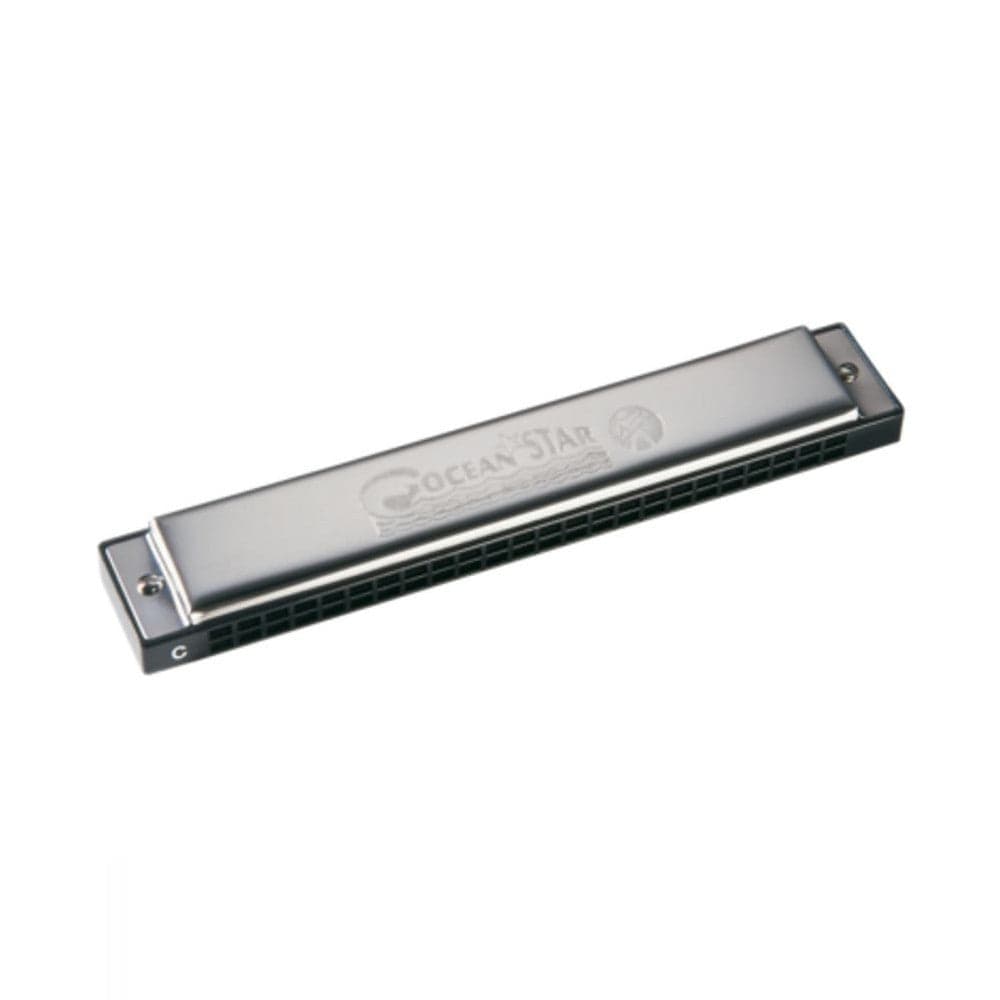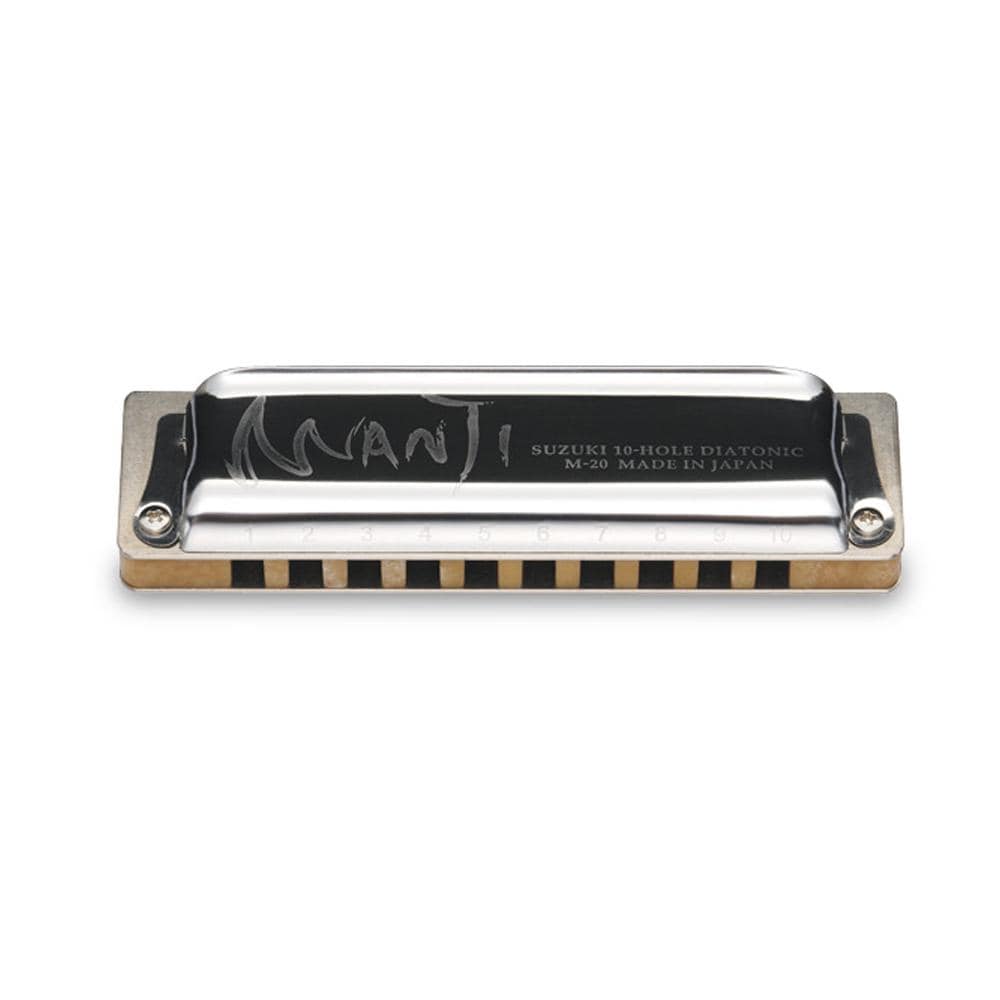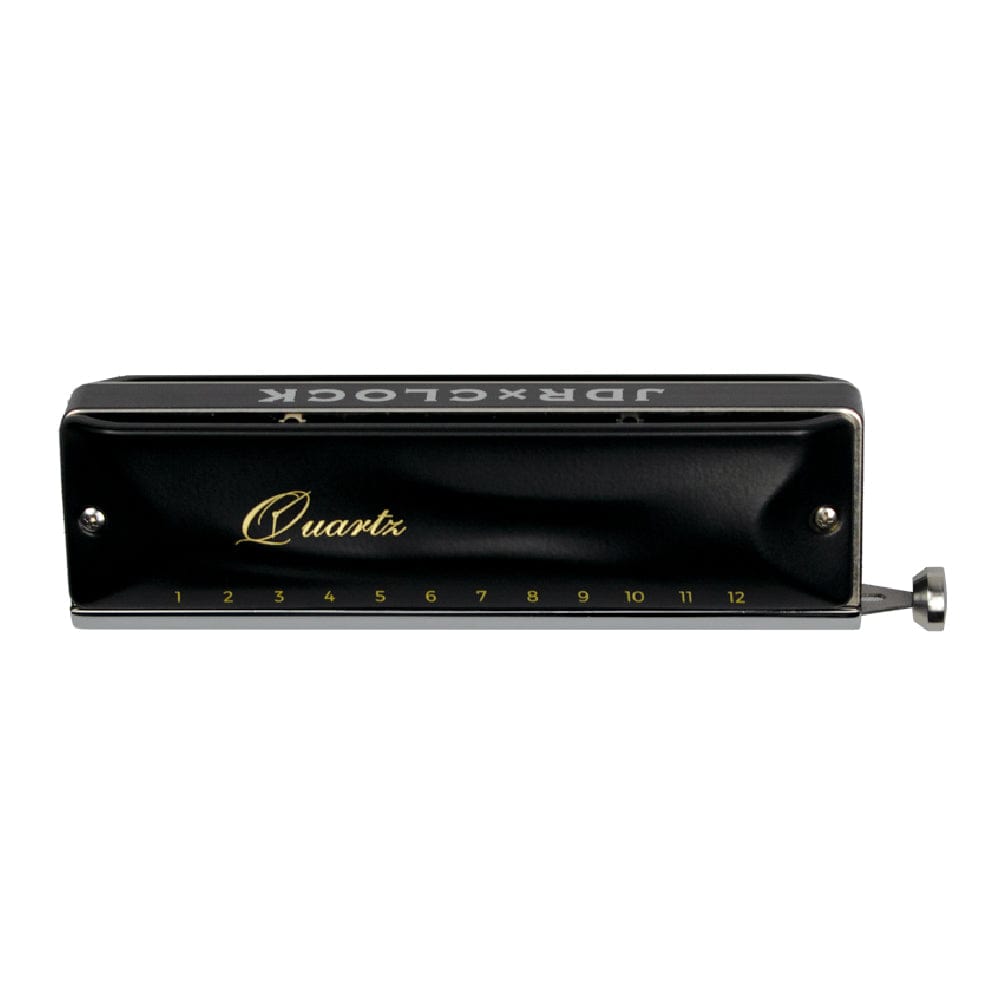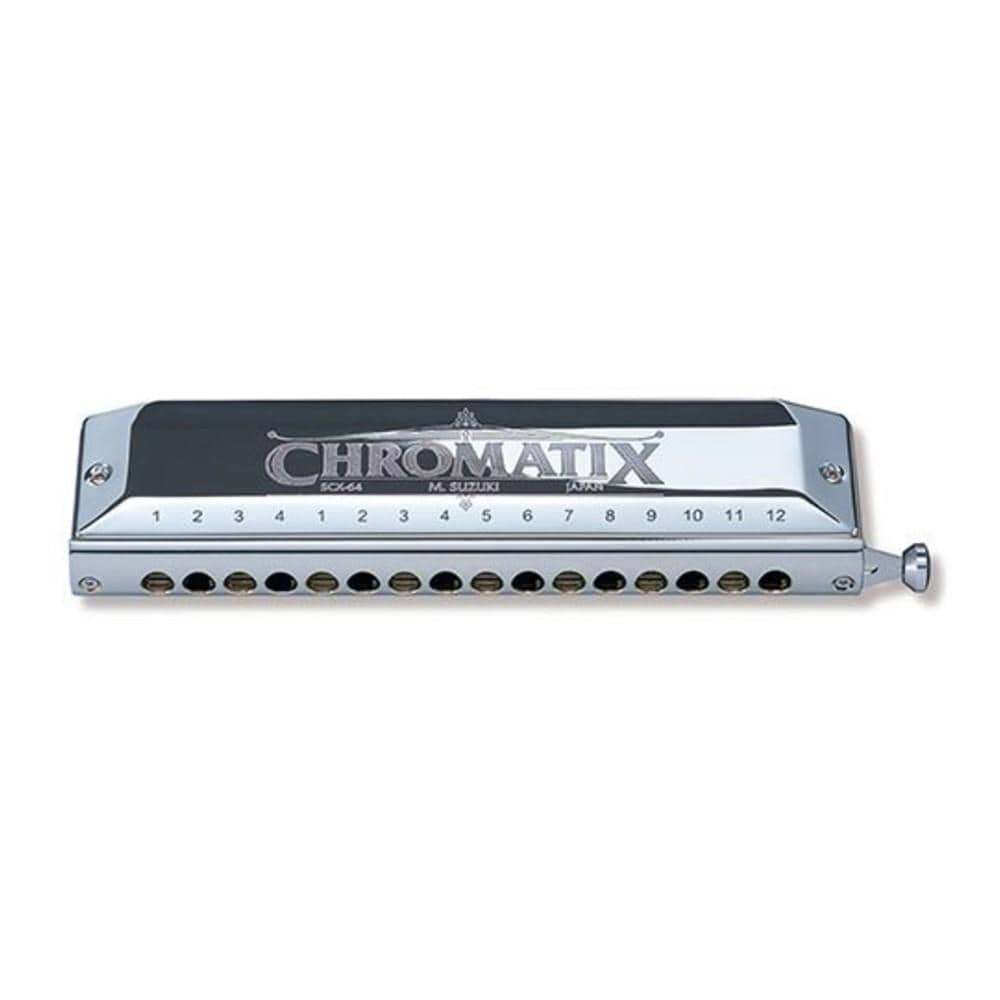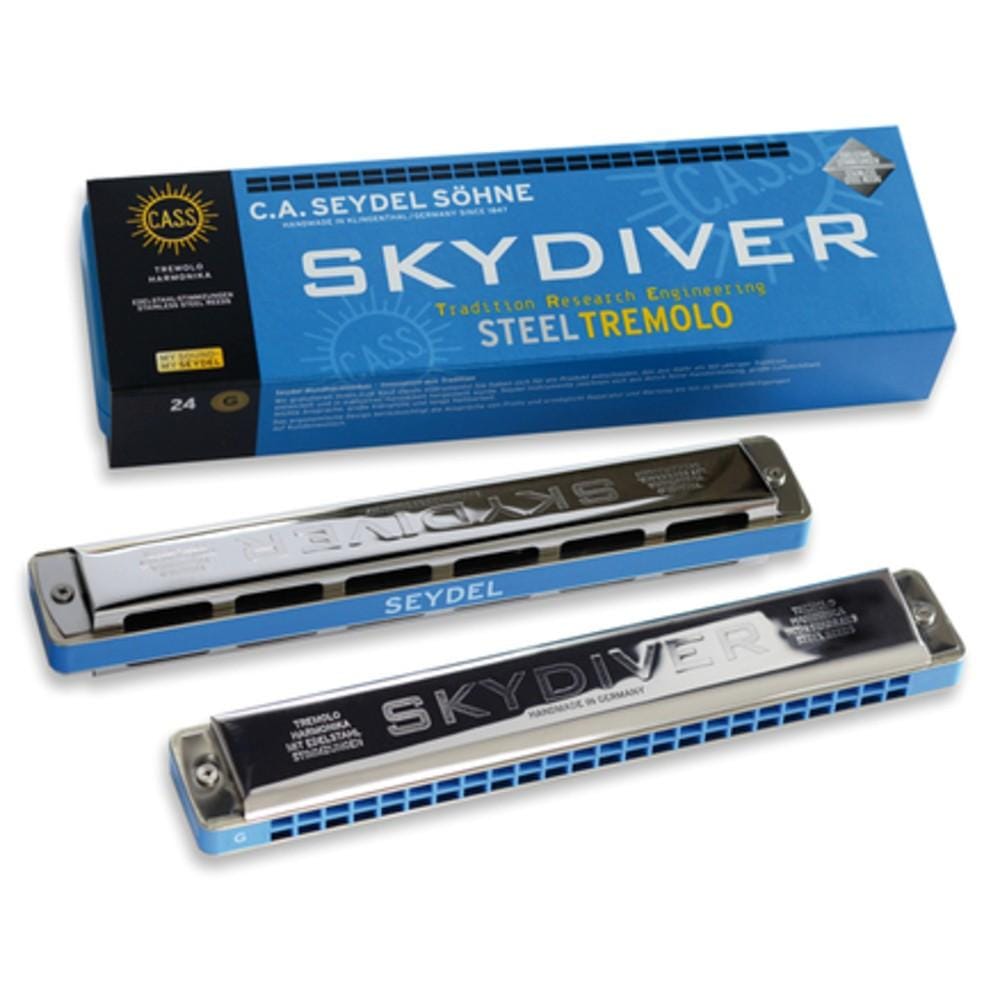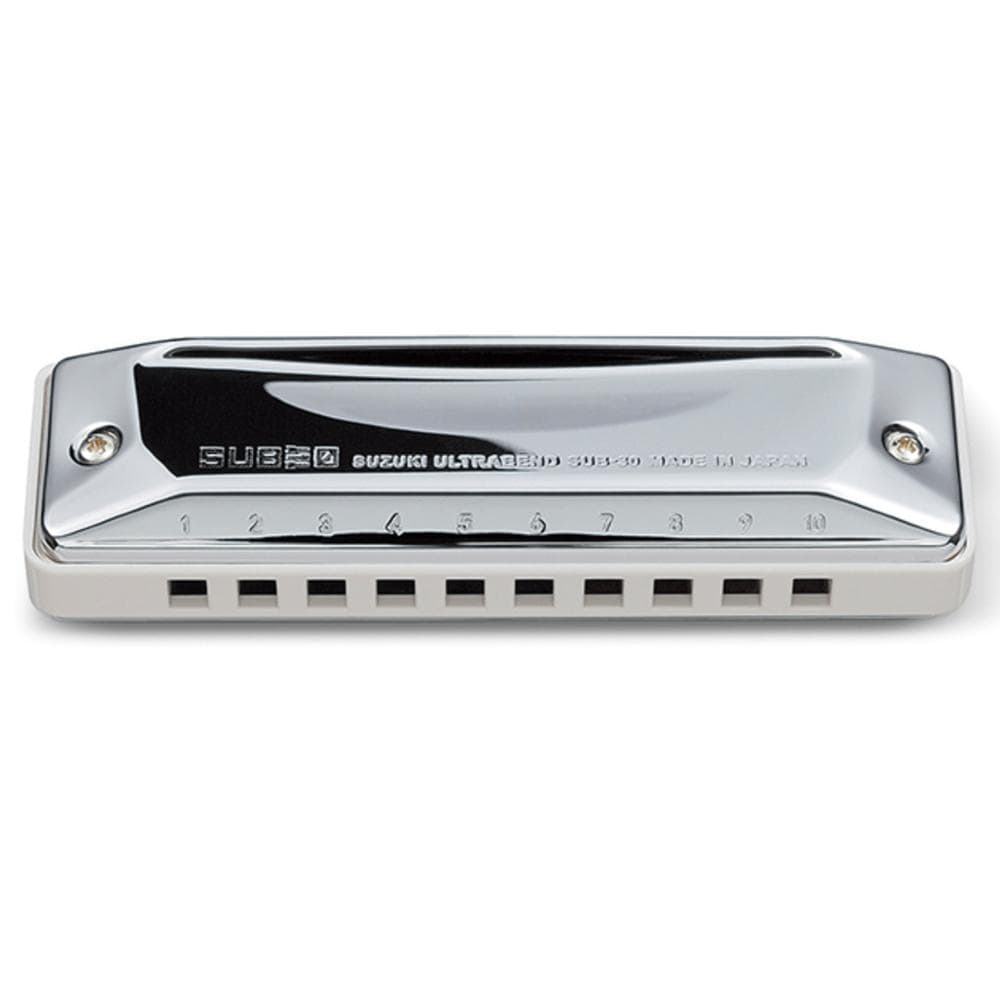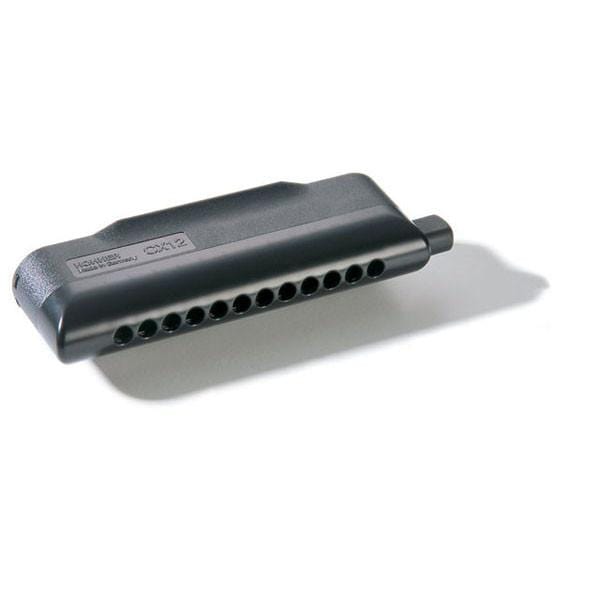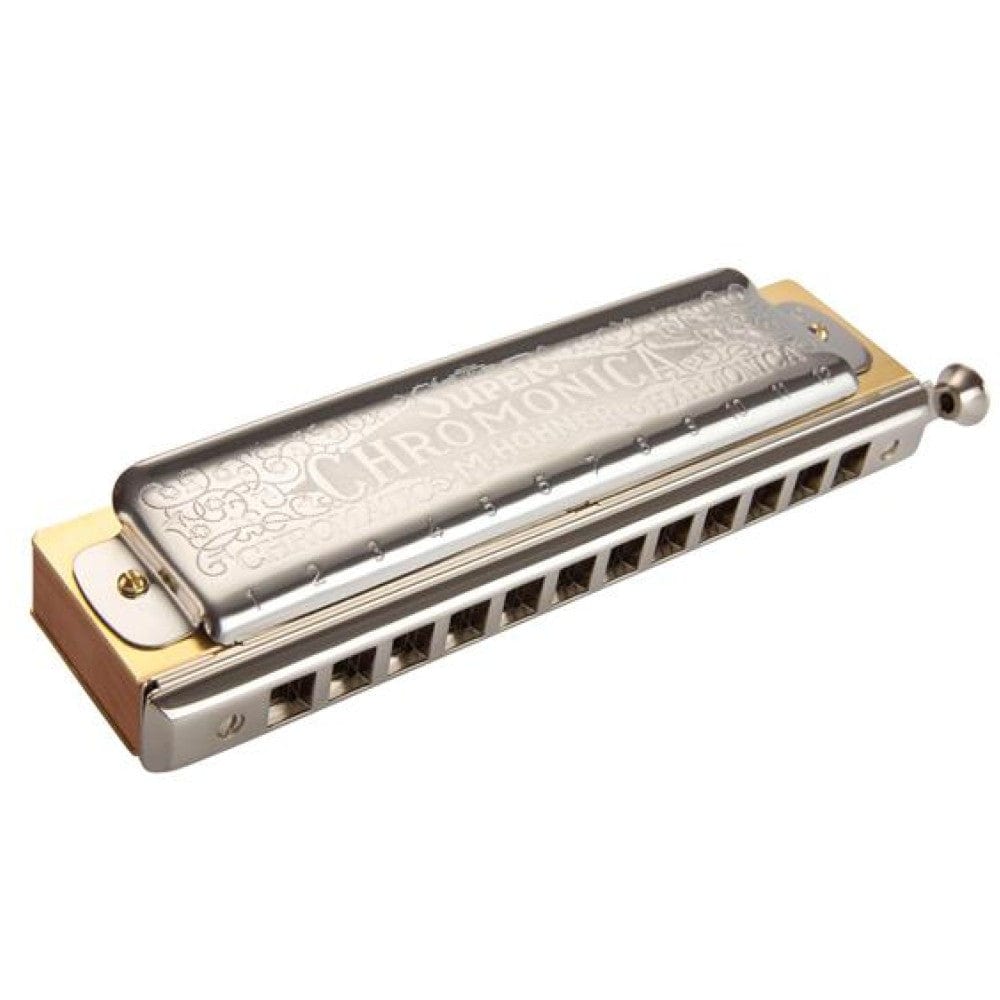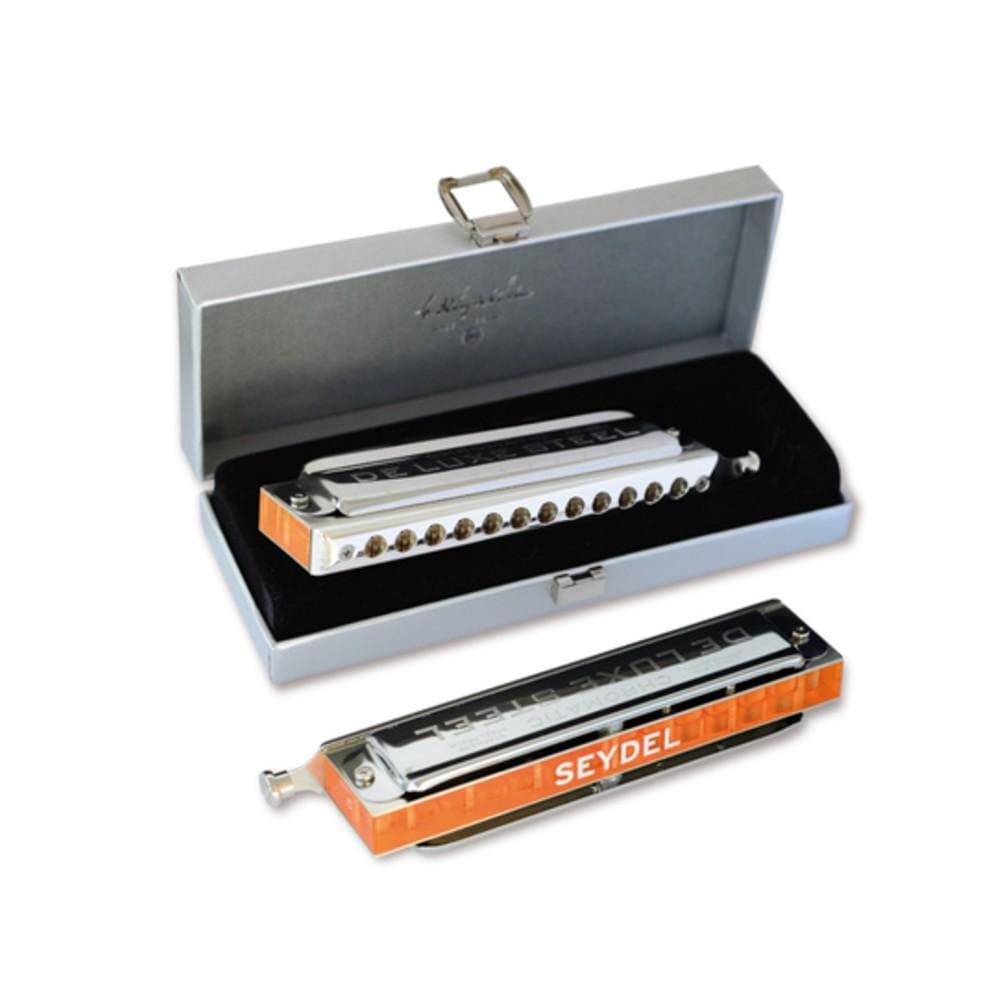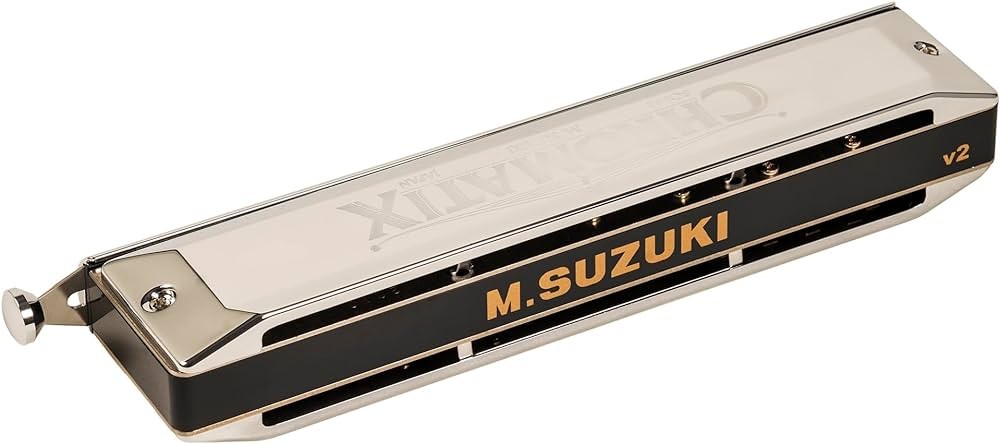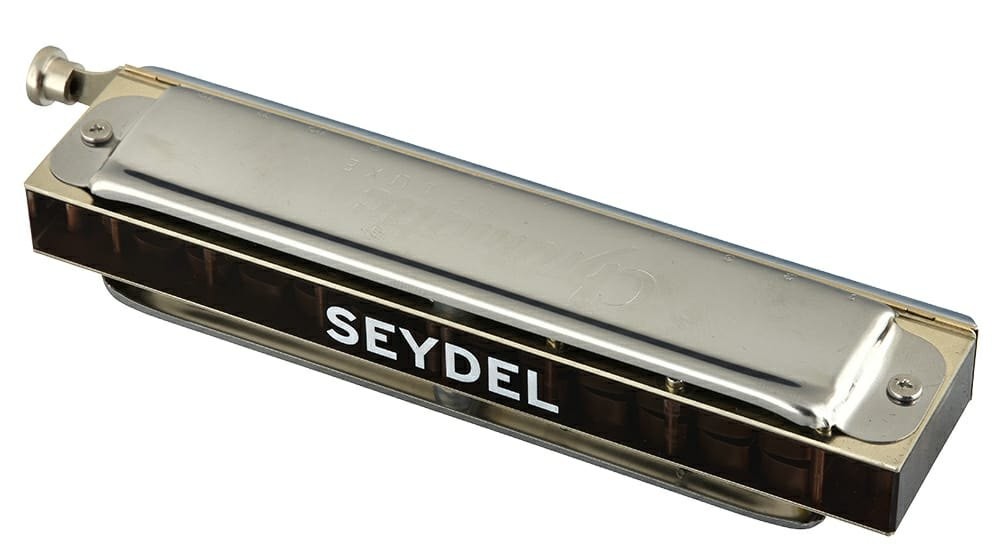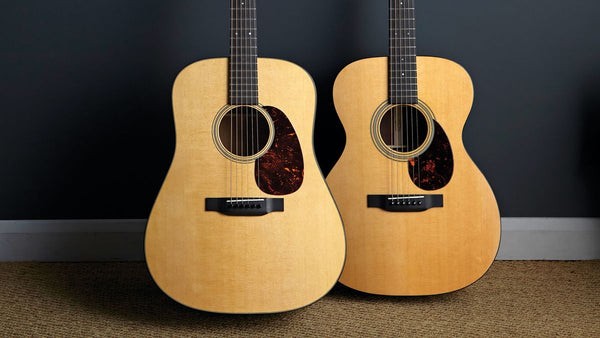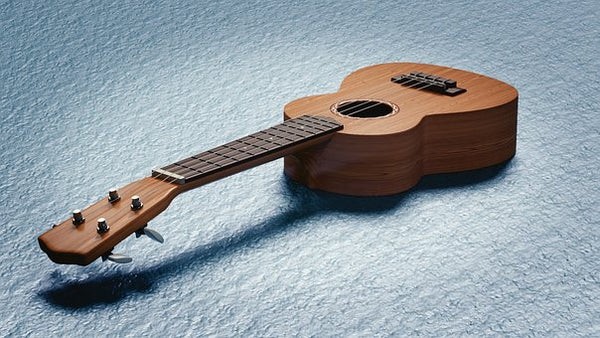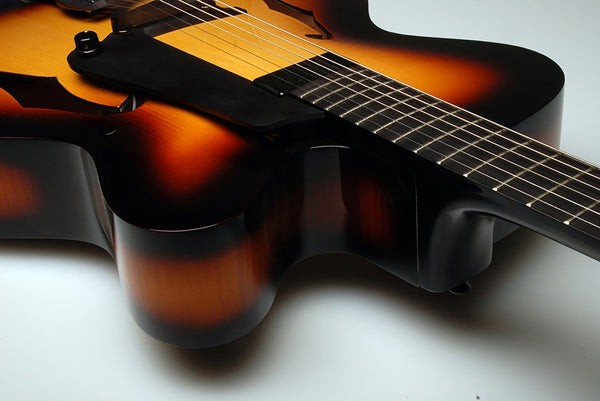Harmonica Buying Guide- How to Choose the Right One
Introduction
The harmonica, also known as the mouth organ, is a surprisingly versatile instrument with a rich history and a surprisingly bright future in your musical journey. Don't be fooled by its pocket-sized stature – this little powerhouse can produce a wide range of sounds, from soulful blues bends to bright, high-pitched melodies. Whether you're a seasoned musician looking for a portable companion or a complete beginner curious about exploring music, the harmonica offers a unique and rewarding experience.
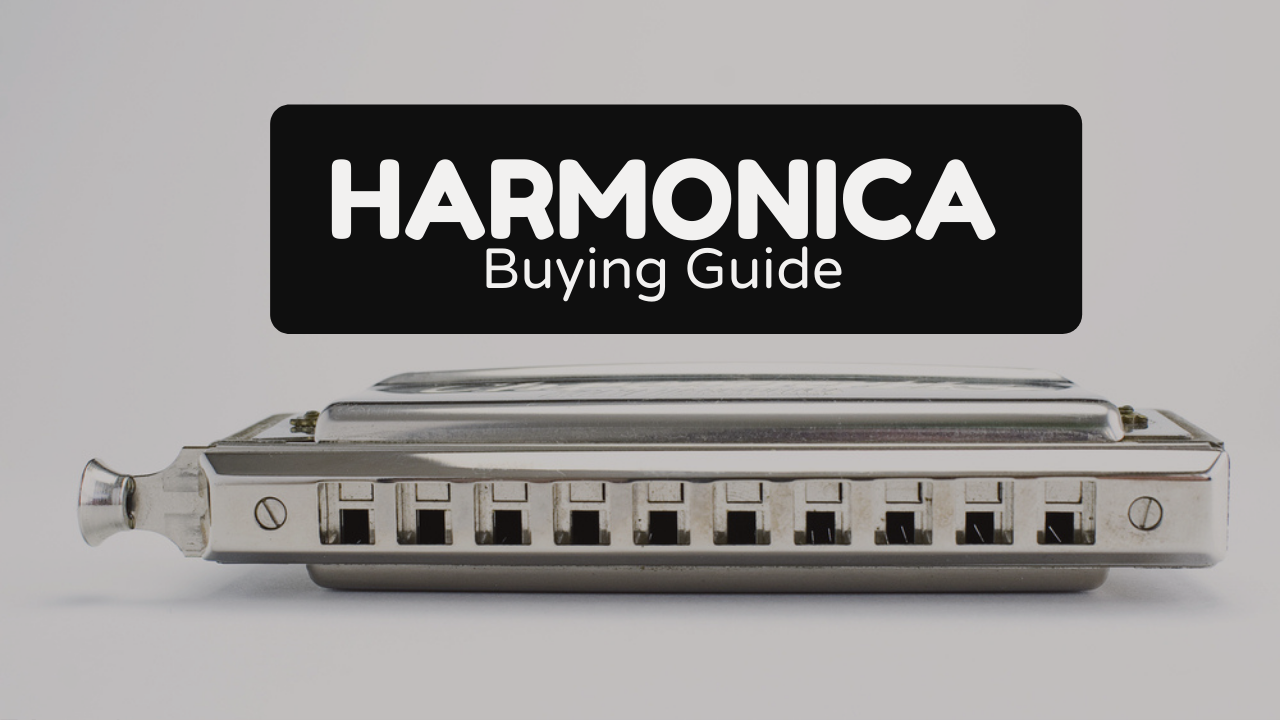
Benefits of Playing the Harmonica:
-
Fun and Accessible: Compared to other instruments, the harmonica has a relatively gentle learning curve. You can start making sounds and playing simple melodies quite quickly, making it a great confidence booster for beginners.
-
Highly Portable: Take your music anywhere! The harmonica's compact size makes it ideal for practicing on the go, jamming with friends, or adding a touch of musical magic to impromptu gatherings.
-
Expressive Potential: Don't underestimate the expressive range of the harmonica. From wailing blues solos to delicate folk melodies, the harmonica can capture a wide range of emotions. With practice, you can learn techniques like bending notes and vibrato to add even more character to your playing.
-
Affordable Instrument: Harmonicas are some of the most budget-friendly instruments on the market. You can find a decent beginner harmonica without breaking the bank, making it a great choice for those who want to explore music without a significant investment.
Addressing Misconceptions:
-
Difficulty: While mastering any instrument takes time and dedication, the harmonica offers a clear pathway to progress. You'll be surprised at how quickly you can learn basic techniques and start playing recognizable tunes.
-
Cost: As mentioned earlier, harmonicas are very affordable, especially compared to other instruments. You don't need to invest a fortune to get started and enjoy making music.
The harmonica may seem small, but its potential for musical expression is vast. So, if you've ever been curious about exploring music or adding a new instrument to your repertoire, the harmonica might be the perfect fit. Let's dive deeper into the world of harmonicas and help you find the perfect instrument to kickstart your musical journey!
Understanding Harmonica Types: Finding Your Perfect Match
The world of harmonicas might seem overwhelming at first glance, but fear not! There are just three main types to consider, each with its own unique sound, playing style, and hole configuration. Let's explore these types and discover which one best suits your musical aspirations.
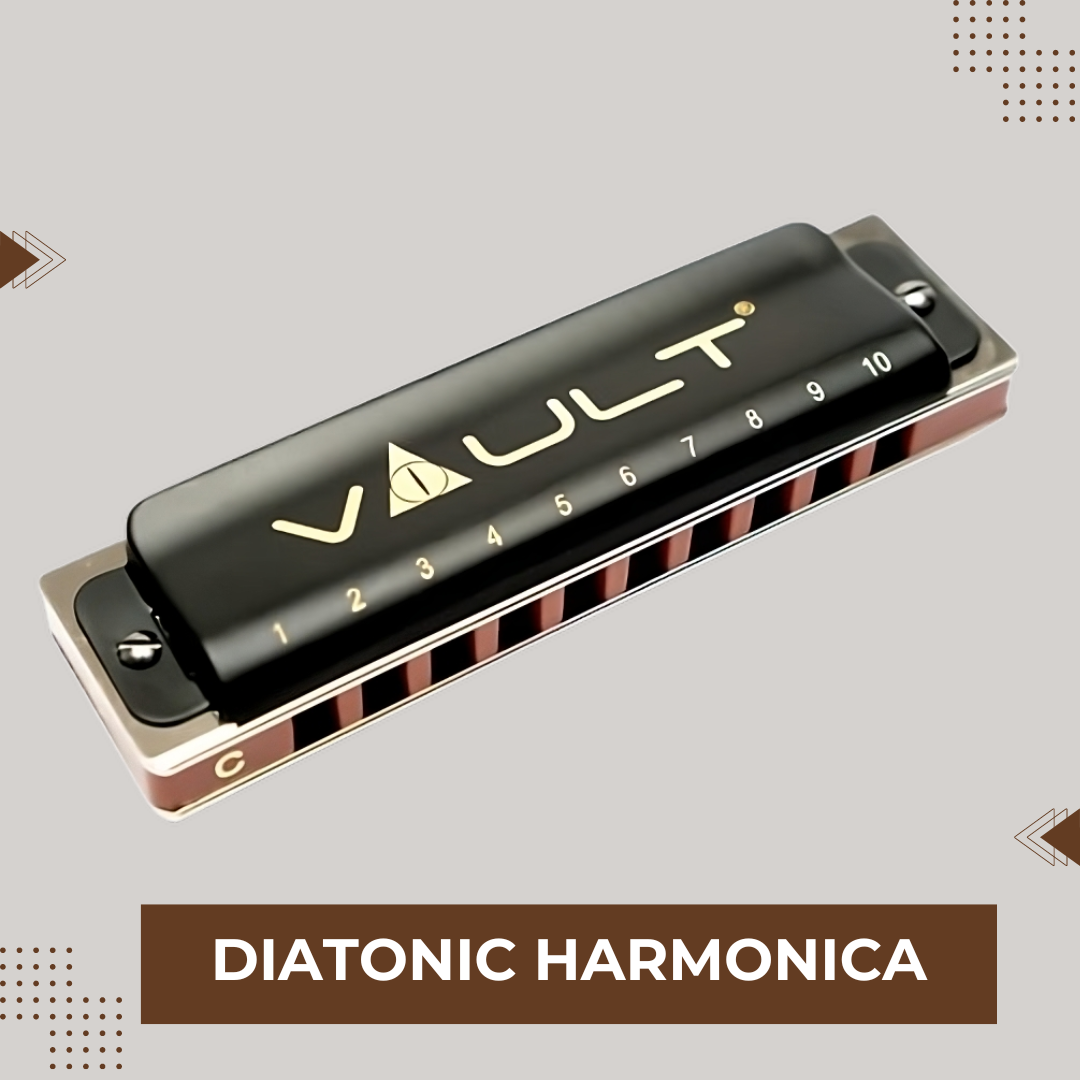
Diatonic Harmonicas: The Perfect Starting Point
The diatonic harmonica is the undisputed king of beginner-friendly harmonicas. It's designed to play in a specific key (most commonly C major), making it easier to learn melodies and riffs without worrying about complex note combinations.
Here's why diatonic harmonicas are perfect for beginners:
-
Simple Layout: Diatonic harmonicas have a straightforward layout, with each hole producing a specific note. This makes it easier to understand the relationship between the holes and the notes they produce. Most diatonic harmonicas have 10 holes, with each hole offering two notes depending on whether you blow or draw air through the harmonica (more on this later).
-
Built-in Blues: Diatonic harmonicas are particularly well-suited for blues music. By using a technique called "bending," you can slightly alter the pitch of certain notes, creating that signature bluesy sound.
-
Versatility Beyond Blues: Don't be fooled by their blues prowess! Diatonic harmonicas can also be used to play folk, country, and even rock music, depending on the key of the harmonica and your playing style
Popular Diatonic Harmonica Keys:
While the C major harmonica is the most common starting point, other popular keys include:
• G Major: Often used for playing along with songs in the key of G or D major.
• A Major: A good choice for playing in the keys of A, E, or B major.
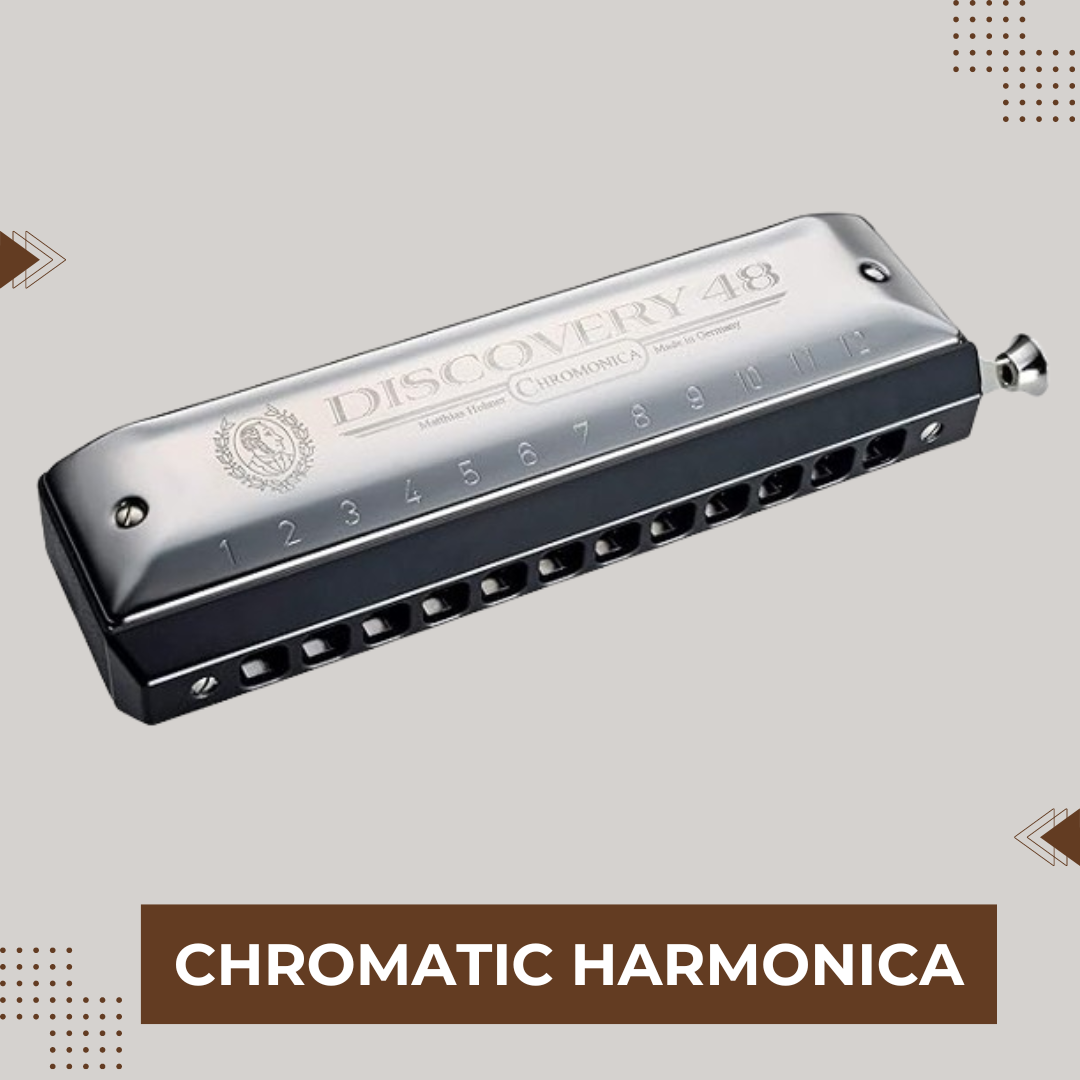
Chromatic Harmonicas: Mastering All the Notes
The chromatic harmonica is the ultimate chameleon of the harmonica family. Unlike diatonic harmonicas, which are limited to one key, chromatics can play any note within a wide range, thanks toa special slide mechanism. This allows for incredible versatility and the ability to play complex melodies and scales.
However, this versatility comes at a cost:
-
Steeper Learning Curve: Mastering the chromatic harmonica requires more practice and dedication compared to the diatonic harmonica. The additional button mechanism adds complexity, and playing all the notes smoothly takes time and practice. While diatonics typically have 10 holes, chromatic harmonicas come in various sizes, with the most common being 12 holes. Each hole on a chromatic harmonica offers up to 3 notes (blow, draw, and a bent note achieved with the slide mechanism).
Chromatic Harmonicas are best suited for:
-
Advanced Players: If you've already mastered the diatonic harmonica and crave more musical freedom, the chromatic is the natural progression.
-
Professional Musicians: For musicians who need to play in various keys or perform complex melodies, the chromatic harmonica becomes an essential tool.
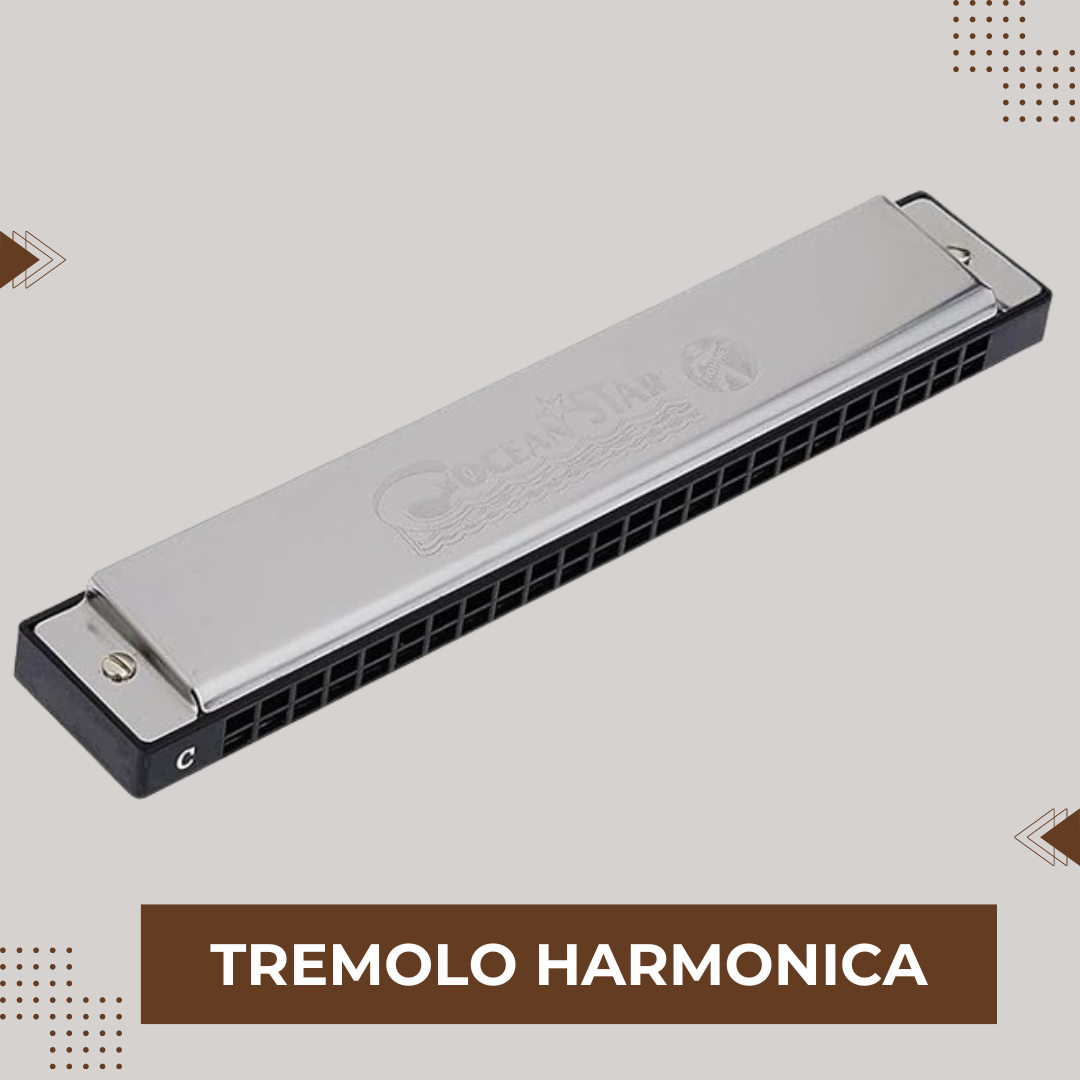
Tremolo Harmonicas: A Sound Unlike Any Other
The tremolo harmonica offers a unique and captivating sound. Unlike other harmonicas, which produce a single clear note, tremolo harmonicas have two reeds per hole that are slightly out of tune. When played, these reeds vibrate against each other, creating a warbling or tremolo effect. Similar to diatonic, tremolo harmonicas typically have 10 holes, with each hole offering a tremolo effect when played.
Tremolo Harmonicas are ideal for:
-
Folk and Country Music: The tremolo effect adds a rich, nostalgic character often associated with folk and country music genres.
-
Special Effects: In specific musical contexts, the tremolo effect can add a unique touch and create interesting sonic textures.
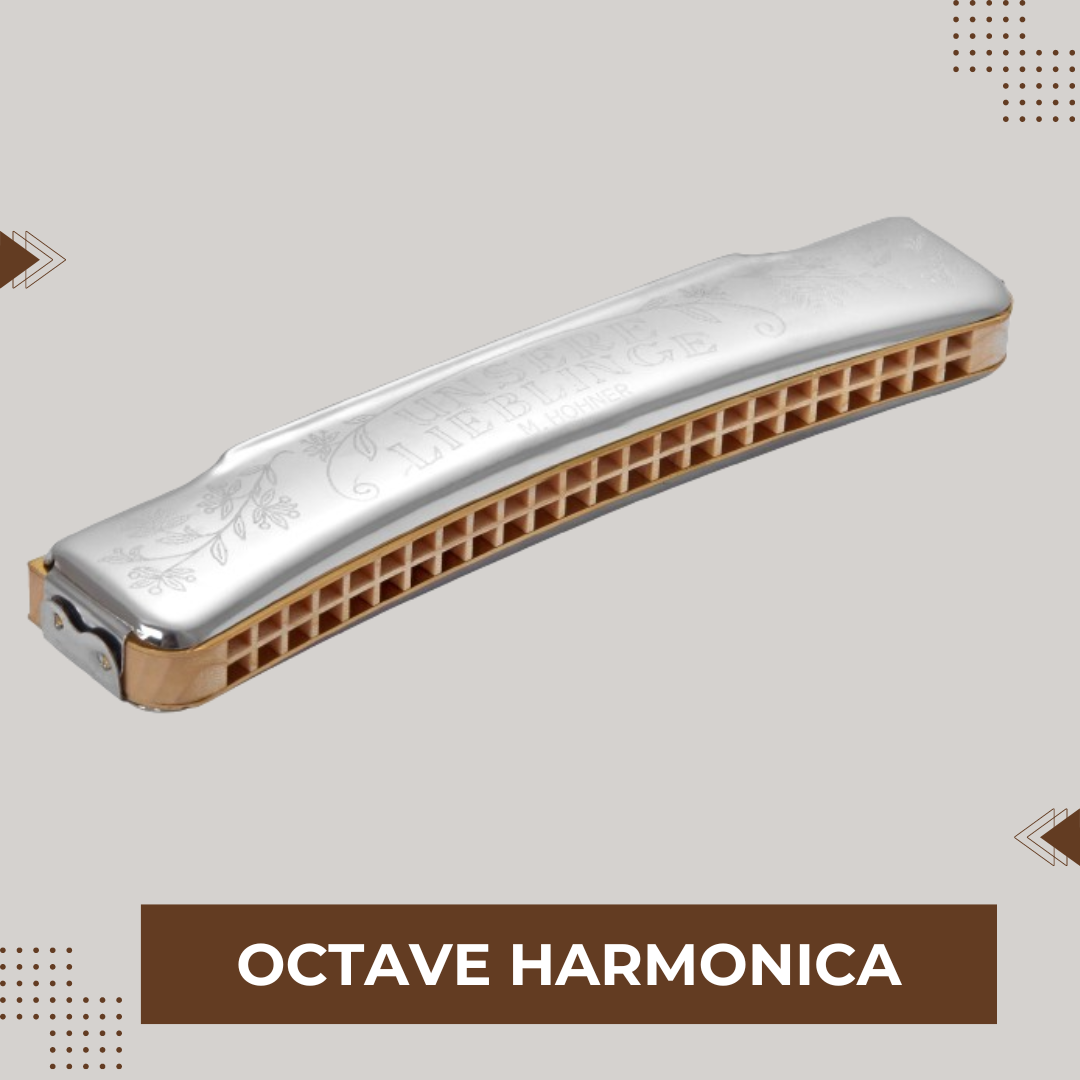
Octave Harmonicas: Doubling the Depth of Your Sound
The octave harmonica, also known as the double-reed harmonica, is a type of harmonica that produces notes in octave intervals. Each hole on the harmonica has two reeds, one tuned to produce the fundamental note and the other tuned to produce the same note one octave higher. When played, both reeds are activated simultaneously, producing a rich, full sound with a distinct octave doubling effect.
The octave harmonica is particularly popular in certain styles of music where a fuller, richer sound is desired, such as folk, country, and some styles of blues. It's also commonly used in ensemble playing to provide depth and resonance to melodies.
Ideal for Intermediate to Advanced Players
While beginners may find the octave harmonica challenging due to its double-reed design, intermediate and advanced players will appreciate its depth and versatility. If you've already mastered the basics of harmonica playing and are looking to expand your musical horizons, the octave harmonica offers a rewarding journey of exploration and expression.
Remember, this is just a starting point! As you delve deeper into the world of harmonicas, you'll discover a variety of specialty models and tunings. However, understanding these four main types –diatonic, chromatic, tremolo, and Octave – along with their hole configurations, will give you a solid foundation for choosing the perfect harmonica to kick off your musical journey.
Choosing the Right Harmonica for You: Finding Your Perfect Match
Now that you've explored the different harmonica types, it's time to find the one that perfectly complements your musical aspirations!
Here's a breakdown of key factors to consider:
Skill Level:
Beginner:
-
Ease of Bending: Look for a harmonica with good "bendability," meaning the notes can be easily altered slightly to achieve that bluesy sound. This is a key feature for beginners wanting to explore blues styles.
-
Comfortable Mouthpiece: A smooth, comfortable mouthpiece makes practicing more enjoyable and helps avoid fatigue, especially for beginners just getting used to the embouchure (mouth position).
-
Consider a Key of C Harmonica: As mentioned earlier, the C major harmonica is the most common starting point. It allows you to play in a variety of keys and is a great foundation for learning basic music theory on the harmonica.
Best Harmonicas For Beginners to Buy
Professional:
-
Airtightness: Professionals demand a harmonica that is well-sealed and minimizes air leakage. This ensures smooth note transitions and optimal responsiveness.
-
Responsiveness: High-quality reeds and airtight construction contribute to a harmonica's responsiveness. This allows for faster playing and more nuanced control over note bends and vibrato techniques.
Best Harmonicas For Professional to Buy
Material & Construction:
Comb (Body):
-
Plastic: Generally more affordable, lightweight, and easier to maintain. However, plastic combs can sometimes affect sound quality, making them less desirable for professional players.
-
Wood: Offers a warmer and richer sound compared to plastic. While more durable than some plastics, wood can be susceptible to moisture and warping if not properly cared for.
Reeds:
-
Brass: The standard material for harmonica reeds, offering a bright and clear sound. Brass reeds are a good choice for beginners and experienced players alike.
-
Phosphor Bronze: These reeds produce a warmer and more mellow sound compared to brass. They are often preferred by professional players seeking a richer tone.
Brand Comparison:
Choosing a harmonica brand can feel overwhelming, especially for beginners. Here's a quick breakdown to get you started:
-
Hohner: One of the oldest and most respected harmonica manufacturers, Hohner has been producing harmonicas since the 19th century. They offer a wide range of models suited for beginners to professional players, including diatonic, chromatic, tremolo, and octave harmonicas.
-
Seydel: Seydel is another esteemed harmonica manufacturer with a long history of crafting high-quality instruments. Based in Germany, Seydel produces a diverse range of harmonicas known for their excellent craftsmanship and innovative designs.
-
Suzuki: Suzuki harmonicas are highly regarded for their precision engineering and superior sound quality. The brand offers a wide range of harmonicas, including diatonic, chromatic, and orchestral models, suitable for players of all skill levels.
-
Vault: Vault is a brand that specializes in producing harmonicas designed for beginners and intermediate players. They offer affordable harmonicas with decent quality, making them suitable for those who are just starting out or looking for a budget-friendly option. Vault harmonicas are known for their durability and playability, making them a popular choice among casual players and enthusiasts alike.
Remember: When starting, don't feel pressured to get the most expensive harmonica. Focus on features that cater to beginners, like ease of bending and a comfortable mouthpiece. As you progress and develop your skills, you can invest in a higher-end harmonica with advanced features.
Ultimately, the best way to choose a harmonica is to try it out! Visit a music store and see if they have harmonicas you can test. Feel the weight, play a few notes, and see how it feels in your hands. This hands-on experience can be invaluable in making your decision.
Harmonica Care & Maintenance:
Your harmonica is a delicate instrument, and proper care will extend its lifespan and maintain its optimal sound quality. Here are some simple cleaning techniques:
-
After Playing: Gently tap the harmonica face down on a clean palm to remove any excess moisture. You can also use a soft cloth to wipe off any dust or debris.
-
Avoid Harsh Chemicals: Never use harsh chemicals or cleaning solutions on your harmonica. Stick to water and a soft cloth.
-
Deep Cleaning (Occasionally): For a deeper clean every few months, disassemble the harmonica according to the manufacturer's instructions (usually by removing the cover plates). Important Note: Beginners should be cautious about disassembling the harmonica, and it might be best to consult a professional for the first deep clean.
-
Once disassembled, you can gently wipe the reed plates with a damp cloth (not soaked). Let everything dry completely before reassembling.
Final Thoughts:
Throughout this exploration, you've discovered the world of harmonica types, from the beginner-friendly diatonic to the versatile chromatic and the unique tremolo. You've learned key considerations for choosing the perfect instrument, from skill level and material construction to reputable brands and proper care practices
Explore, Experiment, and Make Music!
Now that you're armed with this knowledge, it's time to take the next step! Don't be afraid to explore different harmonica types and brands to find the one that resonates most with you. With a little practice and the help of online resources, you'll be surprised at how quickly you can start making beautiful music. Remember, the harmonica is an instrument that rewards exploration and experimentation. So, have fun, bend those notes (literally and figuratively!),and discover your own unique musical voice.
The Joy of Playing the Harmonica
The harmonica is more than just an instrument; it's a gateway to a world of musical expression. Its compact size and portability make it a perfect companion for jam sessions with friends, impromptu street performances, or simply creating music in the comfort of your own home. The harmonica's ability to produce a wide range of sounds, from soulful blues bends to bright and cheerful melodies, allows you to explore various musical genres and find your own style.
So, what are you waiting for? Grab your harmonica, take a deep breath, and let the music flow! As you embark on this musical journey, remember – the most important ingredient is your passion and enthusiasm. With dedication and a touch of harmonica magic, you'll be creating music that will bring joy to yourself and those around you.
Happy harmonica playing!
Get Our Latest Post in Your Inbox
Subscribe and get exclusive reviews, buying guides, updates on the latest models, expert tips, and more – all delivered directly to your inbox!


 Used Gear
Used Gear
 Connect
Connect

